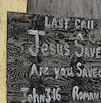





Index to Articles

|
 |
MY STORY Detroit: From Industrial Giant to Empty Landscape It was 1967 and I was a newly-wed, living with my husband in an apartment building at West Chicago and Linwood. A group of my relatives from Flint were visiting; they'd been invited to come and meet my husband. After enjoying food and conversation, we discovered there was a disturbance outside. Yes, it was the day the riot began. |
 |
Woodward Avenue has so many historic buildings, it has been designated an official American "Scenic Byway." There are numerous buildings with historic markers in front and examples of beautiful architecture along Woodward Avenue, which also boasts America's first patch of paved road. | |
 | See Detroit: Remembering My Days as an ADC Worker In the late 1960s, I was a welfare worker, with a caseload in midtown Detroit. Revisiting the site where my clients lived, I found that a once-dense neighborhood had turned into empty countryside | |
 | Detroit's Abandoned Houses Neighborhoods all over the city have vacant lots and empty houses waiting for demolition. Thousands have already been demolished and Mayor Mike Duggan is working toward saving some through city ownership of the properties and online auction sales as well as stepping up necessary demolitions as funds are available. Some streets have only a few occupied homes. | |
 | Detroit's abandoned Fisher Body Plant The Fisher Body #21 plant is located on Piquette St, in an area that has other historic buildings related to auto history, including Henry Ford's original Model T factory. Fisher built auto bodies for all the General Motors cars and this plant was in operation into the 1980s, but today it is silent and empty. | |
 | Detroit's Segregation Past Detroit has been home to people of many ethnic groups from its founding, but the city has a long history of racial separation resulting in poor relations between whites and blacks. Housing segregation and battles over whether a neighborhood would be white or black have contributed to two major riots, one in the 1940s reuslting in 34 deaths and another in the 1960s resulting in 44 deaths. Abandoned neighborhoods are a legacy of segregation. | |
 | Detroit's abandoned Packard Plant In the first half of the Twentieth Century, the Packard Motor Car Company built luxury automobiles on a huge (3.5 million square feet) site in Detroit. The company went out of business in 1956, but their massive buildings are still mostly standing and the ruins of a place that once employed thousands of workers is now a favorite of photographers, attracted to the infamous Ruins of Detroit. | |
 | Detroit: Revisiting the Site of the 1967 Riot In the early morning hours of July 23, 1967 the mostly white Detroit police raided an after hours drinking establishment patronized by blacks. Fights broke out and soon a crowd assembled in the street, challenging the police. The trouble spread to other parts of the city and for more than a week the city was a battlefield, as the National Guard tried to restore order. The city has never really recovered. | |
 | Detroit's Abandoned Neighborhoods — and One Thriving Neighborhood Detroit is a physically large city that once held almost two million people, but as of the 2010 census the population has dipped to about 700,000. People have been leaving the city since the 1967 riots, and they've left behind empty houses, piles of trash and abandoned neighborhoods... but Hispanic Detroit is an exception. | |
 | Touring the D: More Abandonment All kinds of buildings in the city have been abandoned -- houses, shopping centers, churches, schools and commercial buildings. People use empty lots to dump trash and graffiti artists use empty buildings as canvasses for their work. It makes for colorful displays and unusual landscapes. | |
 |
With the decline in population, school buildings become surplus. These buildings are difficult to secure or sell and they quickly become targets for vandals and arsonists. | |
 | Abandonment at the City's Edge, Close to the Suburbs Abandoned neighborhoods are in every part of the city, including at the edge of the suburbs. The depopulation of the city has hit every corner. | |
 |
Through the efforts of Tyree Guyton, one street in Detroit has become an outdoor gallery of fantastic objects as the stuff left by those leaving the city becomes unique urban art |